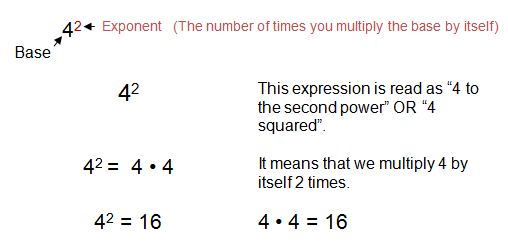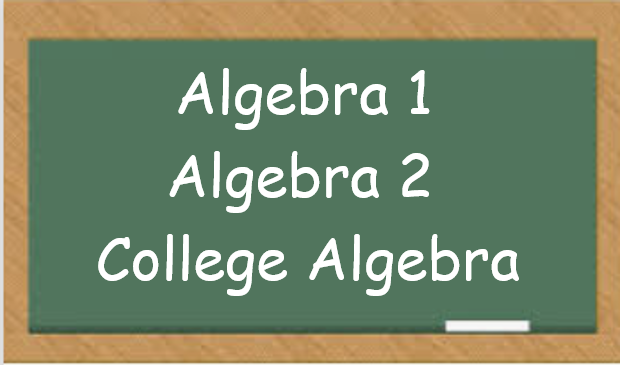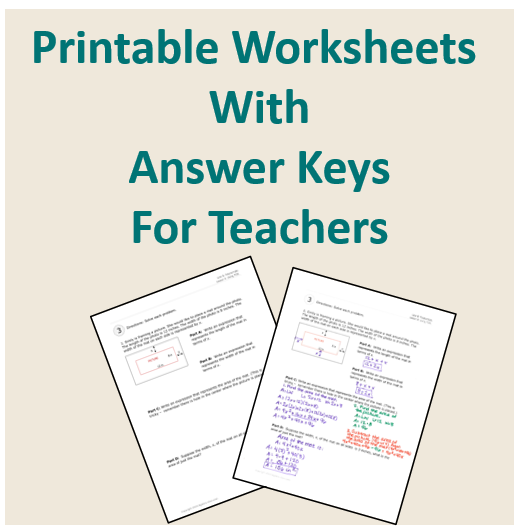What is an Exponent?
As we begin our study of pre-algebra and algebraic expressions, you will need to learn and understand the use of exponents. So, let's begin by defining the term exponent.
An exponent is a number (small and raised) that represents the "shortcut method" to showing how many times a number is multiplied by itself.
That sounds complicated, so let's look at a few examples:
Example 1
Example 2

Special Exponents
When a power has an exponent of 2, it can be read as "to the second power" OR "squared".
52 is read as: "5 to the second power" OR "5 squared".
When a power has an exponent of 3, it can be read as "to the third power" OR "cubed".
53 is read as: "5 to the third power" OR "5 cubed."
Example 3
Write the product as a power.
With this direction, you are working backwards and writing the product (multiplication problem) as a power.

Summing it up
When working with powers, you have a base number. That base number is then raised to a "power" (this is the exponent). The exponent tells you how many times to multiply the base by itself.

So, don't let exponents intimidate you - all you really need to know is how to multiply!
Check out the next lesson on the order of operations to see how powers are calculated in a numerical expression.
- Home >
- Pre-Algebra >
- Exponents

Need More Help With Your Algebra Studies?
Get access to hundreds of video examples and practice problems with your subscription!
Click here for more information on our affordable subscription options.
Not ready to subscribe? Register for our FREE Pre-Algebra Refresher course.






Comments
We would love to hear what you have to say about this page!